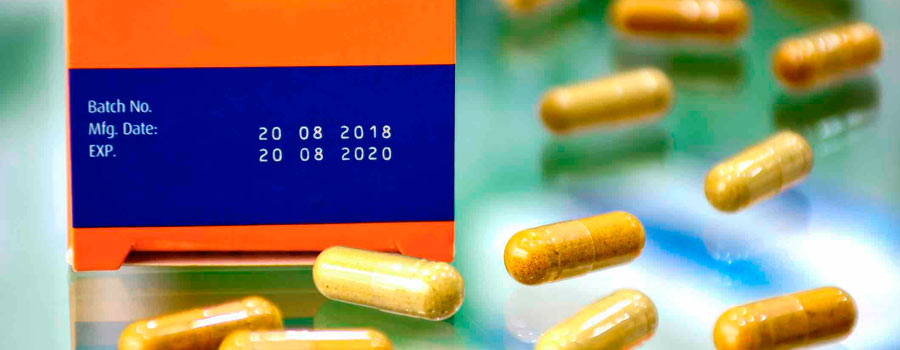- Have any questions?
- (772) 318-6829

Medical Surplus for Education Purposes
6 de February de 2023
Expired Medical Supplies Stores
22 de February de 2023The Truth About Buying Soon Expired Medical Supplies from a Reliable USA Company
Did you know that Hospitals and pharmacies across the nation lose billions of dollars every year from disposing of expired or unused medications? A recent study projected that physicians waste $3 billion (about $9 per person in the US) every year. But the sector that is responsible for wasteful dumping is not just large industry but household and schools who are unaware of the lifespan of drugs.
“The expiration date is the final day that the manufacturer guarantees the full potency and safety of a medication. However, the drug expiration dates exist on most medication labels, including prescription, over the counter (OTC) and dietary (herbal) supplements. U.S. pharmaceutical manufacturers are required by law to place expiration dates on prescription products prior to marketing, for legal and liability reasons, manufacturers will not make recommendations about the stability of drugs past the original expiration date. However, for most drugs, it's just an arbitrary date, usually 1 to 5 years out, that the manufacturer selects to test drug stability. Once the container of medication is opened after production, that expiration date is no longer guaranteed. A
Why buying soon to be expired medical supply is not such a bad idea.
According to experts there are many reasons why buying soon to expired or expired medications is perfectly fine since most medications are consumed years before they are expired. Before you throw your medication out or are hesitant to buy expired medication you need to first know how drug expiration dates are determined.
The expiration date of a drug is estimated by using stability testing under good manufacturing practices as determined by the Food and Drug Administration (FDA). Usually, the drug products marketed in the US typically have an expiration date that extends from 12 to 60 months (about 5 years) from the time of manufacturer. However, once the original container is opened, either by the patient or the health care provider who will dispense the drug, that original expiration date on the container can no longer be relied upon.2 However, the actual shelf life of the drug may be much longer as stability studies have shown.
According to the FDA website Food and Drugs Administration regulations require drug applicants to provide stability testing data with a proposed expiration date and storage conditions when they submit an application for FDA approval of their drug. This testing is designed to provide confidence that the product will meet the applicable standards of strength, quality, and purity throughout its shelf-life. The FDA verifies that an applicant’s proposed expiration date is supported by appropriate studies that the applicant has conducted.
For non-application drugs, such as over-the-counter monograph products, the manufacturer must also conduct stability testing to establish an expiration date and storage conditions to meet FDA’s regulations (see 21 CFR 211.166 as well as related sections 211.137 and 211.160) .
Pharmacies, both retail and hospital, nursing homes, and consumers toss away billions of dollars of medications each year based on stamped expiration dates on stock bottles. This has resulted in over $800 million in drugs lost annually. Despite this, The United States Pharmacopeia (USP), the body that sets the standards for pharmaceutical quality in the U.S., recommends using "beyond use" dates. The "beyond use" date would never be later than the expiration date on the manufacturer's bottle.4
When you visit the pharmacy, a "beyond-use" date is often put on the prescription bottle label given to the patient. These dates often say, "do not use after..." or "discard after..." and are required by the Board of Pharmacy in many states. These dates are typically one year from the date of fill or refill. But despite the lifespan of a drug can be changed. According to the FDA’s guidance for industry, “Changes to an Approved NDA or ANDA” explains that the manufacturer of an approved drug product may extend the expiration date for the drug product based on their own testing and acceptable data in accordance with a protocol approved in the new drug application (NDA) or abbreviated new drug application (ANDA) (see 21 CFR 314.70). To help alleviate drug shortages, the FDA has also approved extensions of expiration dates when data supporting the extension are available.
The More You Know
The main reason why most people are skeptical about buying expired drugs is became they believed the expired drugs will lose their potency. The New York Times in an article published on July 7, 2022, stated that “some drugs may work past their expiration date. The article states that although expiration and beyond use dates provide useful information — you can feel confident your medicine will work for at least that long if it’s been properly stored (more on that in a minute) — drugs don’t necessarily become dangerous or less potent once that date has passed, said Lee Cantrell, a clinical pharmacist with the School of Pharmacy at the University of California, San Francisco.”
Shelf-Life Extension Program (SLEP) undertaken by the FDA for the Department of Defense.2,3,7 is perhaps the best evidence which suggest that some drugs might lose their potency.
The original purpose of the SLEP program was twofold: to determine the actual shelf life of stockpiled military medications for future use, and to save government dollars.5 Over 3000 lots, representing 122 different drug products, were assessed in the SLEP program. Potency, pH, water content, dissolution, physical appearance, or presence of impurities were assessed. Based on stability data, expiration dates on 88% of the lots were extended beyond their original expiration date for an average of 66 months (about 5 and a half years). Of these, roughly 12% more remained stable for at least 4 years after the expiration date. Of these 2652, only 18% were terminated due to failure.3 Examples of common drug products that were tested with no failures included amoxicillin, ciprofloxacin, diphenhydramine, and morphine sulfate injection.10 Drug expiration extension dates on these products ranged from 12 months to 184 months (over 15 years).3,10 Biologics are not included in the SLEP program.the FDA concluded Under the Shelf-Life Extension Program (SLEP), FDA conducts testing for certain products stored in federal stockpiles in environmentally controlled locations. (Federal stockpiles are stores of certain drugs that might be needed to prevent or treat diseases or conditions which may occur during a public health emergency.) SLEP is a fee-for-service program through which the labeled shelf life of certain federally stockpiled products can be extended after select products undergo periodic stability testing conducted by FDA.
Drugs held by consumers may have been stored under varied conditions after entering the market. As a result, it would be difficult to conduct testing to determine expiration dates that would be meaningful and generally applicable after prolonged periods of storage under different conditions. The appropriate conditions will depend on the drug, but may include considerations regarding temperature, humidity, and exposure to light. So, buying soon to expired drugs from a reliable US company such as GB Tech US might not just save you a headache, it could save some dollars as well. Visit https://www.gbtechusa.com
“The expiration date is the final day that the manufacturer guarantees the full potency and safety of a medication. However, the drug expiration dates exist on most medication labels, including prescription, over the counter (OTC) and dietary (herbal) supplements. U.S. pharmaceutical manufacturers are required by law to place expiration dates on prescription products prior to marketing, for legal and liability reasons, manufacturers will not make recommendations about the stability of drugs past the original expiration date. However, for most drugs, it's just an arbitrary date, usually 1 to 5 years out, that the manufacturer selects to test drug stability. Once the container of medication is opened after production, that expiration date is no longer guaranteed. A
Why buying soon to be expired medical supply is not such a bad idea.
According to experts there are many reasons why buying soon to expired or expired medications is perfectly fine since most medications are consumed years before they are expired. Before you throw your medication out or are hesitant to buy expired medication you need to first know how drug expiration dates are determined.
The expiration date of a drug is estimated by using stability testing under good manufacturing practices as determined by the Food and Drug Administration (FDA). Usually, the drug products marketed in the US typically have an expiration date that extends from 12 to 60 months (about 5 years) from the time of manufacturer. However, once the original container is opened, either by the patient or the health care provider who will dispense the drug, that original expiration date on the container can no longer be relied upon.2 However, the actual shelf life of the drug may be much longer as stability studies have shown.
According to the FDA website Food and Drugs Administration regulations require drug applicants to provide stability testing data with a proposed expiration date and storage conditions when they submit an application for FDA approval of their drug. This testing is designed to provide confidence that the product will meet the applicable standards of strength, quality, and purity throughout its shelf-life. The FDA verifies that an applicant’s proposed expiration date is supported by appropriate studies that the applicant has conducted.
For non-application drugs, such as over-the-counter monograph products, the manufacturer must also conduct stability testing to establish an expiration date and storage conditions to meet FDA’s regulations (see 21 CFR 211.166 as well as related sections 211.137 and 211.160) .
Pharmacies, both retail and hospital, nursing homes, and consumers toss away billions of dollars of medications each year based on stamped expiration dates on stock bottles. This has resulted in over $800 million in drugs lost annually. Despite this, The United States Pharmacopeia (USP), the body that sets the standards for pharmaceutical quality in the U.S., recommends using "beyond use" dates. The "beyond use" date would never be later than the expiration date on the manufacturer's bottle.4
When you visit the pharmacy, a "beyond-use" date is often put on the prescription bottle label given to the patient. These dates often say, "do not use after..." or "discard after..." and are required by the Board of Pharmacy in many states. These dates are typically one year from the date of fill or refill. But despite the lifespan of a drug can be changed. According to the FDA’s guidance for industry, “Changes to an Approved NDA or ANDA” explains that the manufacturer of an approved drug product may extend the expiration date for the drug product based on their own testing and acceptable data in accordance with a protocol approved in the new drug application (NDA) or abbreviated new drug application (ANDA) (see 21 CFR 314.70). To help alleviate drug shortages, the FDA has also approved extensions of expiration dates when data supporting the extension are available.
The More You Know
The main reason why most people are skeptical about buying expired drugs is became they believed the expired drugs will lose their potency. The New York Times in an article published on July 7, 2022, stated that “some drugs may work past their expiration date. The article states that although expiration and beyond use dates provide useful information — you can feel confident your medicine will work for at least that long if it’s been properly stored (more on that in a minute) — drugs don’t necessarily become dangerous or less potent once that date has passed, said Lee Cantrell, a clinical pharmacist with the School of Pharmacy at the University of California, San Francisco.”
Shelf-Life Extension Program (SLEP) undertaken by the FDA for the Department of Defense.2,3,7 is perhaps the best evidence which suggest that some drugs might lose their potency.
The original purpose of the SLEP program was twofold: to determine the actual shelf life of stockpiled military medications for future use, and to save government dollars.5 Over 3000 lots, representing 122 different drug products, were assessed in the SLEP program. Potency, pH, water content, dissolution, physical appearance, or presence of impurities were assessed. Based on stability data, expiration dates on 88% of the lots were extended beyond their original expiration date for an average of 66 months (about 5 and a half years). Of these, roughly 12% more remained stable for at least 4 years after the expiration date. Of these 2652, only 18% were terminated due to failure.3 Examples of common drug products that were tested with no failures included amoxicillin, ciprofloxacin, diphenhydramine, and morphine sulfate injection.10 Drug expiration extension dates on these products ranged from 12 months to 184 months (over 15 years).3,10 Biologics are not included in the SLEP program.the FDA concluded Under the Shelf-Life Extension Program (SLEP), FDA conducts testing for certain products stored in federal stockpiles in environmentally controlled locations. (Federal stockpiles are stores of certain drugs that might be needed to prevent or treat diseases or conditions which may occur during a public health emergency.) SLEP is a fee-for-service program through which the labeled shelf life of certain federally stockpiled products can be extended after select products undergo periodic stability testing conducted by FDA.
Drugs held by consumers may have been stored under varied conditions after entering the market. As a result, it would be difficult to conduct testing to determine expiration dates that would be meaningful and generally applicable after prolonged periods of storage under different conditions. The appropriate conditions will depend on the drug, but may include considerations regarding temperature, humidity, and exposure to light. So, buying soon to expired drugs from a reliable US company such as GB Tech US might not just save you a headache, it could save some dollars as well. Visit https://www.gbtechusa.com





